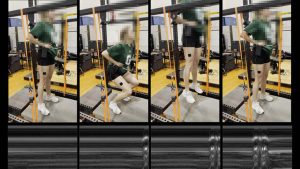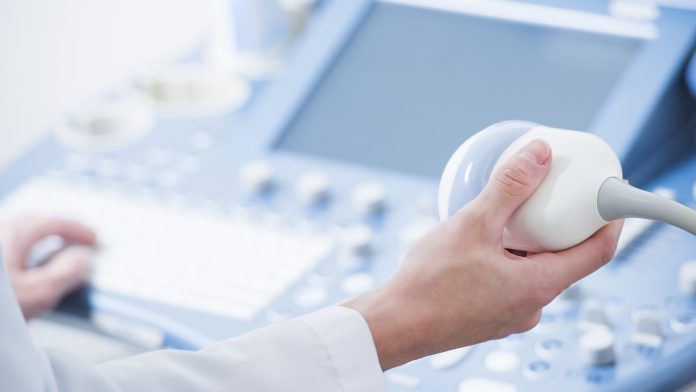Researchers from George Mason University have developed a wearable ultrasound monitor that can produce clinically relevant information about muscle function during dynamic physical activity.
Many medical technologies can give doctors a window into the inner workings of a patient’s body, but few can be used while that patient is moving. A wearable ultrasound monitor can move with the patient and provide unprecedented insight into body dynamics.
The team, led by Parag Chitnis, will present their work today at the Acoustics 2023 meeting in Sydney.
How will the new ultrasound monitor aid faster rehabilitation?
Millions suffer from musculoskeletal injuries every year, and the recovery process can often be long and difficult. Patients typically undergo rehabilitation, slowly rebuilding muscle strength through exercises as their injuries heal.
However, because of the dynamic nature of these exercises, obtaining a clear picture of real-time muscle function is extremely challenging.

“For instance, when an individual is performing a specific exercise for rehabilitation, our ultrasound monitor can be used to ensure that the target muscle is actually being activated and used correctly,” Chitnis explained.
“Other applications include providing athletes with insights into their physical fitness and performance, assessing and guiding recovery of motor function in stroke patients, and assessing balance and stability in elderly populations during routine everyday tasks.”
How was the device designed?
Designing a wearable ultrasound monitor took much more than simply strapping an existing one to a patient. Chitnis and his team reinvented ultrasound technology nearly from scratch to produce the needed results.
Chitnis said: “We had to completely change the paradigm of ultrasound imaging. Traditionally, ultrasound systems transmit short-duration pulses, and the echo signals are used to make clinically useful images.
“Our ultrasound monitor uses a patented approach that relies on transmission of long-duration chirps, which allows us to perform ultrasound sensing using the same components one might find in their car radio.”
This modified approach allowed the team to design a simpler, cheaper system that could be miniaturised and powered by batteries. This let them design an ultrasound monitor with a small, portable form factor that could be attached to a patient.
Soon, Chitnis hopes to further improve his device and develop software tools to more quickly interpret and analyse ultrasound signals.








